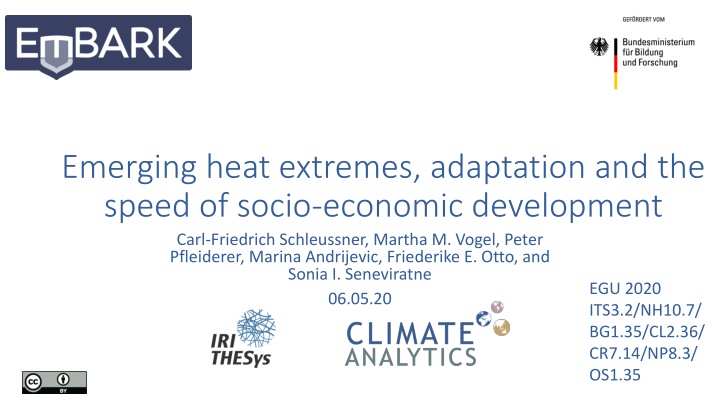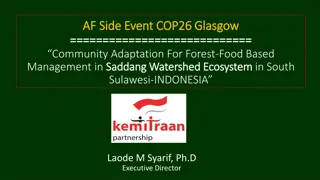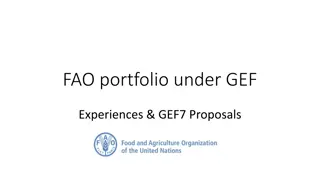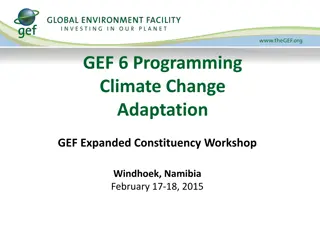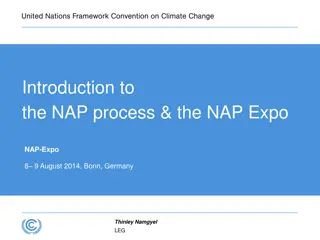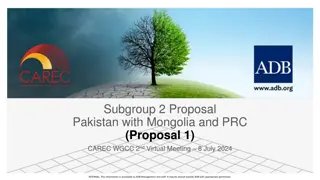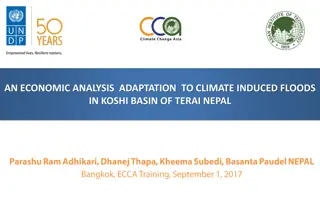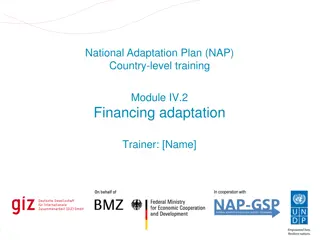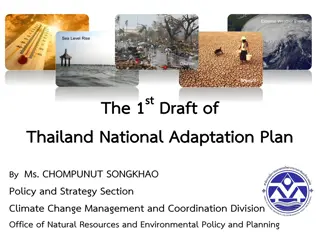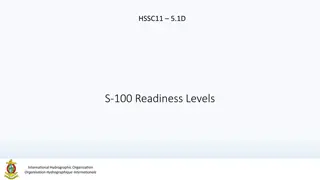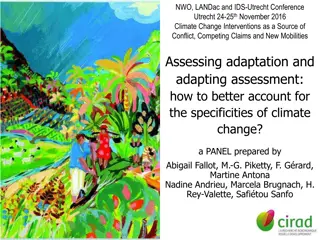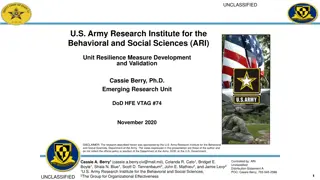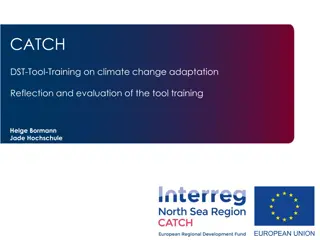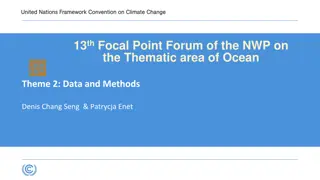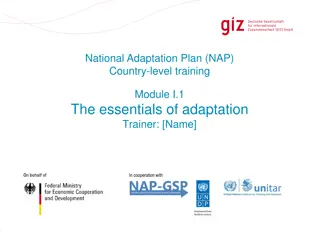Assessing Climate Resilience Building and Adaptation Readiness
The study explores the emerging heat extremes and the speed of socio-economic development in the context of climate resilience building and adaptation readiness. It assesses the effectiveness of resilience building through the integration of adaptive capacity and climate scenarios, focusing on temporal evolution and reference frameworks. The research projects future resilience building scenarios and their implications, especially for vulnerable countries in need of adaptive measures.
Download Presentation

Please find below an Image/Link to download the presentation.
The content on the website is provided AS IS for your information and personal use only. It may not be sold, licensed, or shared on other websites without obtaining consent from the author.If you encounter any issues during the download, it is possible that the publisher has removed the file from their server.
You are allowed to download the files provided on this website for personal or commercial use, subject to the condition that they are used lawfully. All files are the property of their respective owners.
The content on the website is provided AS IS for your information and personal use only. It may not be sold, licensed, or shared on other websites without obtaining consent from the author.
E N D
Presentation Transcript
Emerging heat extremes, adaptation and the speed of socio-economic development Carl-Friedrich Schleussner, Martha M. Vogel, Peter Pfleiderer, Marina Andrijevic, Friederike E. Otto, and Sonia I. Seneviratne 06.05.20 EGU 2020 ITS3.2/NH10.7/ BG1.35/CL2.36/ CR7.14/NP8.3/ OS1.35
Conceptualising climate resilience through integration of adaptive capacity and climate scenarios Concentration Pathways Scenarios of Adaptive Capacity (Resilient) Development Pathways
An attempt to assess the effectiveness of climate resilience building 1. Assess the temporal evolution of adaptive capacity (proxy adaptation readiness RDY from Andrijevic et al. 2019) 2. Assess the temporal evolution of an index for adaptation pressure (proxied by number of heat days (NHD) relative to a moving reference period, Vogel et al. forthcoming) 3. Decide on a relevant reference framework => value judgment what constitutes sufficient resilience building. Approach: use the recent past as a reference Andrijevic, M., Crespo Cuaresma, J., Muttarak, R., & Schleussner, C.-F. (2019). Governance in socioeconomic pathways and its role for future adaptive capacity. Nature Sustainability. https://doi.org/10.1038/s41893-019-0405-0
The resilience building experience Schleussner et al. (in Review)
Adaptation readiness observed vs. in SSPs Country groupings Country groupings 2050 Observational record doesn t imply catching up of adaptation readiness for everyone, more a the medium rich get richer SSPs illustrate a diverse range of potential futures together resembling the observed Schleussner et al. (in Review)
Projecting resilience building Compared to observed: Adaptation readiness is slowed down under SSP3, substantially faster in SSP1,5 Hot day emergence is slowed down/remains similar/speeding up under RCP26/45/85 Climate resilience building is similar to observed for RCP45-SSP3 and RCP85-SSP5, only significantly improved for the RCP26-SSP1 Schleussner et al. (in Review)
Projecting resilience building Country groupings Country groupings Difference most pronounced for vulnerable countries in biggest need for resilience building Schleussner et al. (in Review)
In which world do we want to be in? Schleussner et al. (in Review)
Thank you for your attention! Andrijevic M, Crespo Cuaresma J, Muttarak R and Schleussner C-F 2019 Governance in socio-economic pathways and its role for future adaptive capacity Nat. Sustain. Online: http://dx.doi.org/10.1038/s41893-019-0405-0 https://www.carbonbrief.org/guest-post-why-climate-scenarios-need-to-better- incorporate-adaptive-capacity
